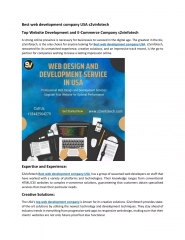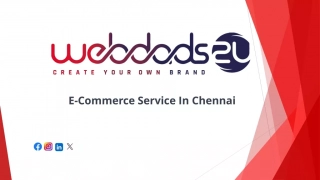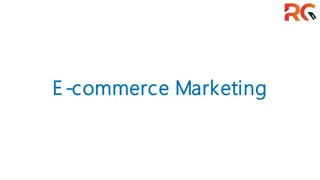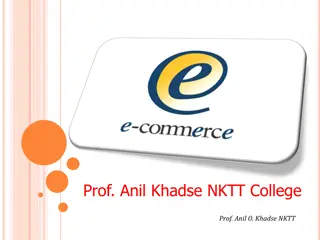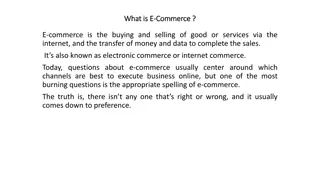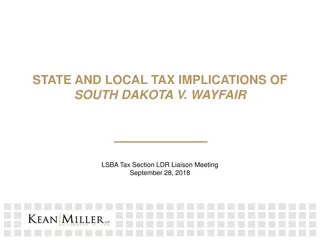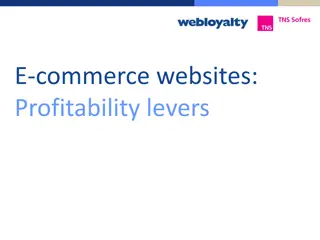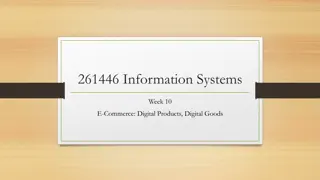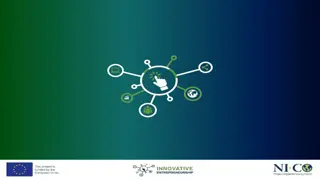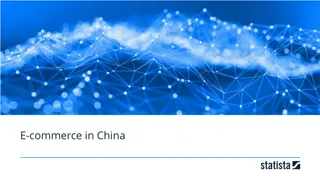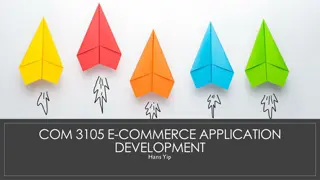E-Commerce and Commerce Overview
In this comprehensive overview, explore the significance of e-commerce and traditional commerce, including definitions, benefits, and applications in today's digital world. Discover how e-commerce revolutionizes business transactions and enhances customer experiences, leading to increased convenience, efficiency, and profitability.
Download Presentation

Please find below an Image/Link to download the presentation.
The content on the website is provided AS IS for your information and personal use only. It may not be sold, licensed, or shared on other websites without obtaining consent from the author.If you encounter any issues during the download, it is possible that the publisher has removed the file from their server.
You are allowed to download the files provided on this website for personal or commercial use, subject to the condition that they are used lawfully. All files are the property of their respective owners.
The content on the website is provided AS IS for your information and personal use only. It may not be sold, licensed, or shared on other websites without obtaining consent from the author.
E N D
Presentation Transcript
E-Commerce Dr B T Sampath Kumar Professor Department of Library and Information Science Tumkur University, Tumakuru, INDIA www.sampathkumar.info
Commerce The activity of buying and selling of goods, especially on a large scale. Generally, commerce refers to the exchange of goods, services between businesses or entities.
E-commerce E-commerce is a term for any type of business, that involves information/money/goods across the Internet. Commercial transactions electronically over the Internet. the transfer of conducted
Need and importance To sell the products across the nation/globe. To improve the brand image of the company. To help organization to provide better customer services. To reduce paper work a lot.
Cont.. To provide 24x7 support to the customer. To provide user more options and quicker delivery of products. To provide options to compare and select the cheaper and better product.
Cont.. To organizations and as a result the organizations provides substantial discounts to customers. To sell the products to the door steps of customers and they need not to travel to the shops. increase competition among the
Applications Online marketing and purchasing Retail and wholesale Finance/Banking Online publishing Online booking (train/bus/flight ticktes)
Online marketing and purchasing Data collection about customer behaviour, customer preferences, customer needs and buying patterns This helps marketing activities such as price fixation negotiation product feature enhancement and relationship with the customer.
Retail and wholesale E-retailing is the selling of goods from Business-to-Consumer through Cyber malls. Cybermall is a single website that offers different products and services at one Internet location. It attracts the customer and the seller into one virtual space through a eb browser.
Finance/Banking Financial companies/banks are using E- commerce to a large extent. Customers can check the balances of their savings and loan accounts. They can transfer money to other accounts and pay bill through on-line banking or E- banking. PhonePe GooglePay Paytm BHIM
Online publishing Online publication of: E-books Digital magazines Development of digital libraries Catalogues. publishing includes the digital
Online booking It helps consumers to book Flights/bus/train tickets Hotels rooms holiday packages insurance and other services online.
Types of E-commerce There are six basic types of e-commerce Business-to-Business (B2B) Business-to-Consumer (B2C) Consumer-to-Consumer (C2C) Consumer-to-Business (C2B) Business-to-Administration (B2A) and Consumer-to-Administration (C2A)
Business-to-Business (B2B) Transactions of goods between two companies, rather than between a company and individual consumer. Manufacturer and wholesaler. Wholesaler and a retailer.
Business-to-Consumer (B2C) The most common form of e-commerce. It deals with electronic business relationships between businesses and consumers. Many people enjoy this avenue of e- commerce because it allows them to shop around for the best prices.
Consumer-to-Consumer (C2C) This level of e-commerce includes all electronic transactions that take place between consumers.
Consumer-to-Business (C2B) C2B e-commerce is when a consumers make their services or products available for companies to purchase. Examples of this would be: a graphic designer customizing a company logo designing a web site for a company a photographer taking photos for an e- commerce website.
Business-to-Administration (B2A) This e-commerce category refers to all transactions between companies and public administration (local government). This is an area that involves many services, particularly in areas such as social security, employment and legal documents.
Consumer-to-Administration (C2A) Another popular e-commerce category. C2A e-commerce encompasses all electronic transactions between individuals and public administration. Examples of this include taxes (filing tax returns) and health appointment using an online service). (scheduling an


